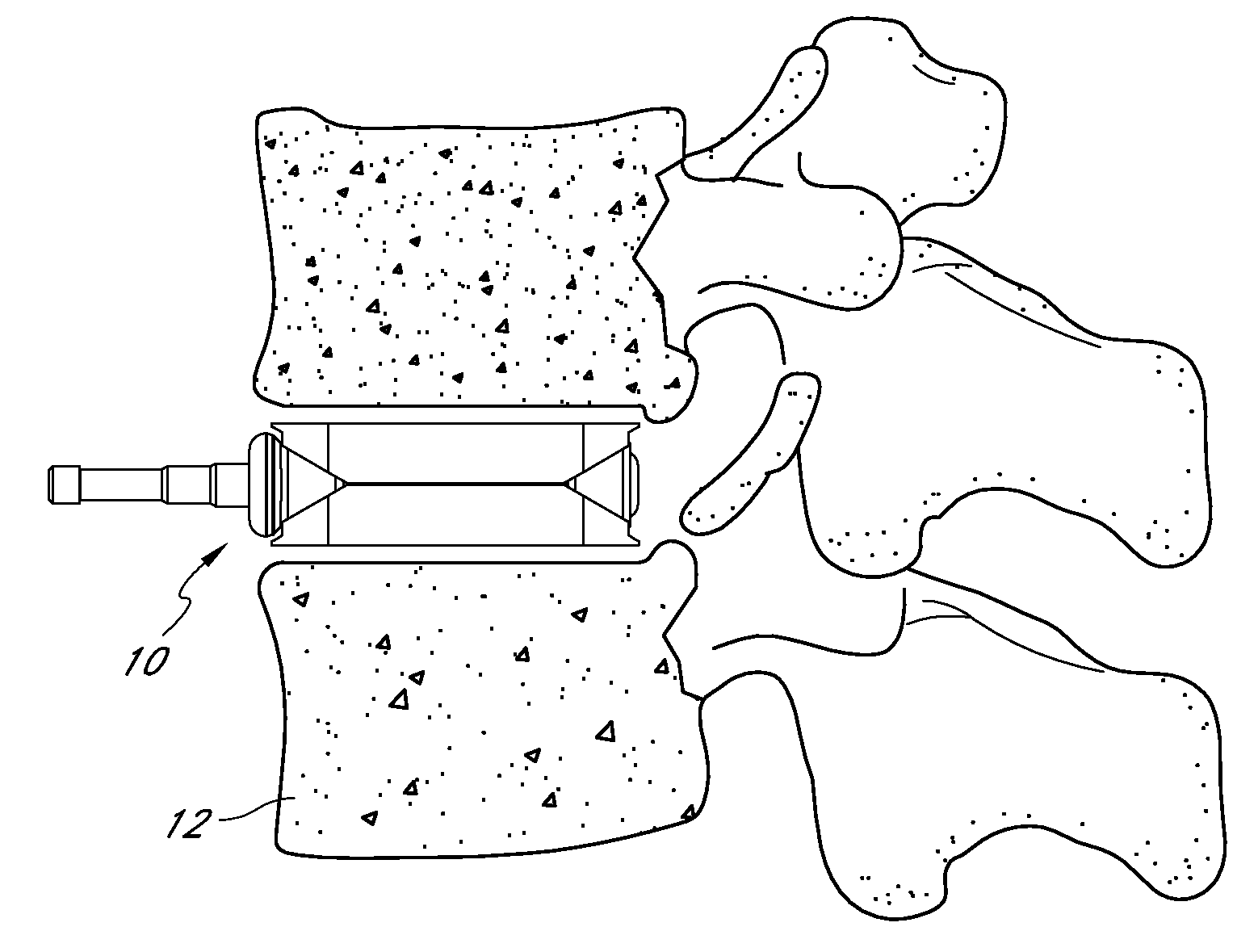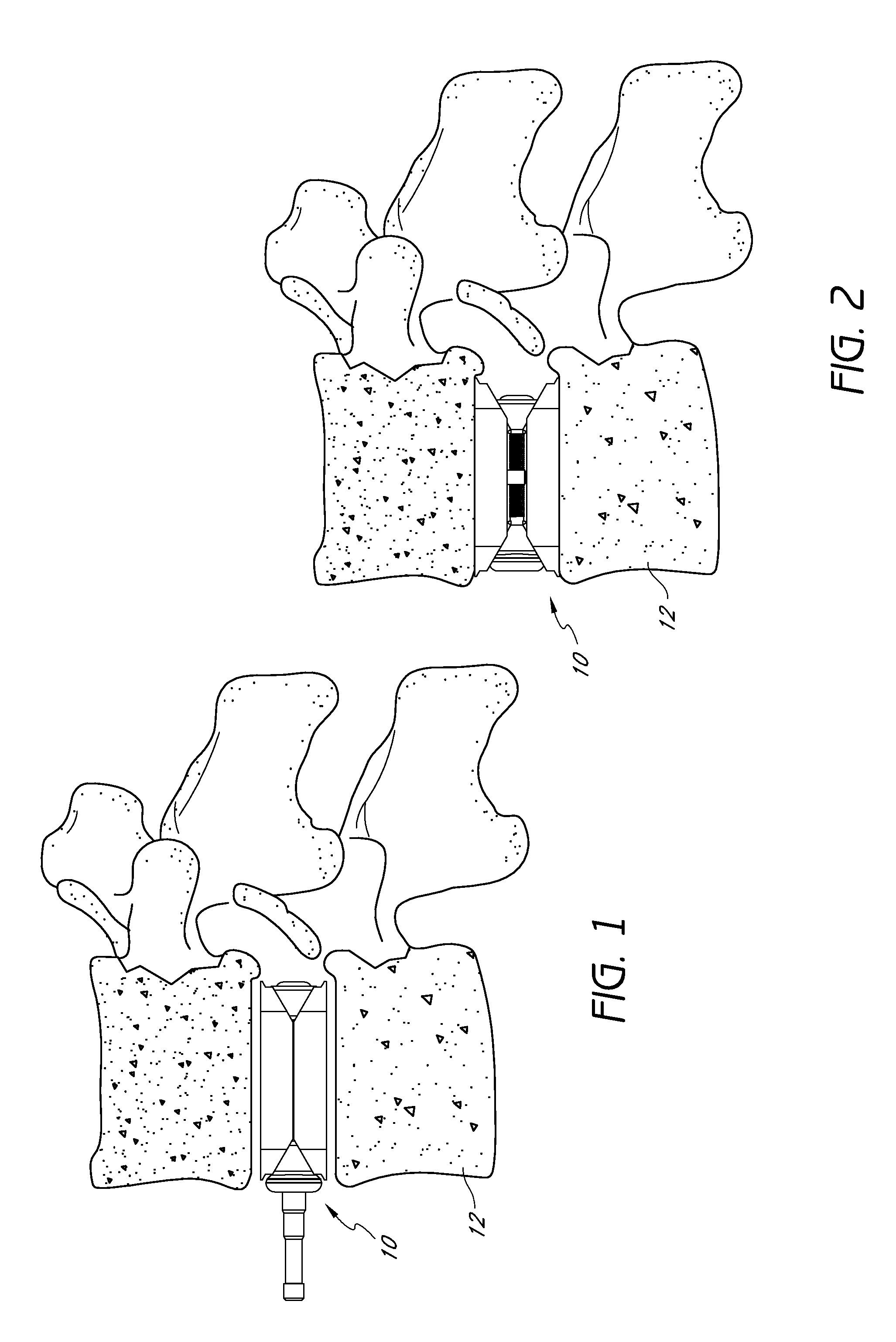Intervertebral implant
a technology of intervertebral implants and implants, which is applied in the field of medical devices, can solve the problems of high cost, inconvenient operation, and injury to the vertebrae and associated connective elements, and achieve the effect of facilitating selective relative movemen
- Summary
- Abstract
- Description
- Claims
- Application Information
AI Technical Summary
Benefits of technology
Problems solved by technology
Method used
Image
Examples
Embodiment Construction
[0067]In accordance with certain embodiments disclosed herein, an improved intervertebral implant is provided that allows the clinician to insert the intervertebral implant through a minimally invasive procedure. For example, in one embodiment, one or more intervertebral implants can be inserted percutaneously to reduce trauma to the patient and thereby enhance recovery and improve overall results of the surgery.
[0068]For example, in one embodiment, an intervertebral implant includes a plurality of body sections that are selectively separable and expandable upon contraction of a centrally disposed actuator. The actuator can be utilized to contract against faces of the body sections to cause the expansion thereof. The implant can also be configured such that the actuator provides for both the expansion and contraction of the body sections. The actuator can comprise an interaction between the body sections and another element, an action performed by another element, or a combination o...
PUM
 Login to View More
Login to View More Abstract
Description
Claims
Application Information
 Login to View More
Login to View More - R&D
- Intellectual Property
- Life Sciences
- Materials
- Tech Scout
- Unparalleled Data Quality
- Higher Quality Content
- 60% Fewer Hallucinations
Browse by: Latest US Patents, China's latest patents, Technical Efficacy Thesaurus, Application Domain, Technology Topic, Popular Technical Reports.
© 2025 PatSnap. All rights reserved.Legal|Privacy policy|Modern Slavery Act Transparency Statement|Sitemap|About US| Contact US: help@patsnap.com



